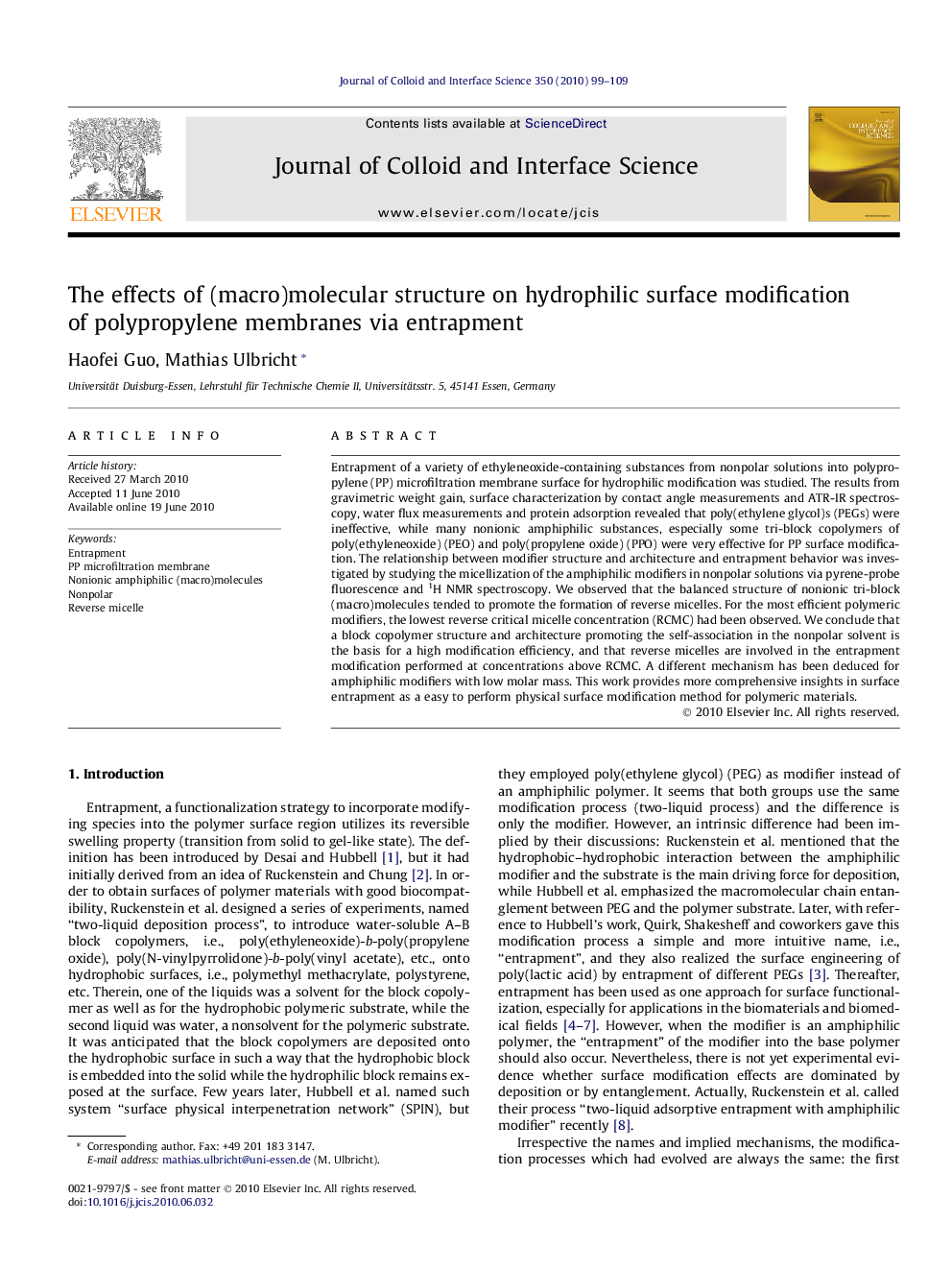| کد مقاله | کد نشریه | سال انتشار | مقاله انگلیسی | نسخه تمام متن |
|---|---|---|---|---|
| 609473 | 880624 | 2010 | 11 صفحه PDF | دانلود رایگان |

Entrapment of a variety of ethyleneoxide-containing substances from nonpolar solutions into polypropylene (PP) microfiltration membrane surface for hydrophilic modification was studied. The results from gravimetric weight gain, surface characterization by contact angle measurements and ATR-IR spectroscopy, water flux measurements and protein adsorption revealed that poly(ethylene glycol)s (PEGs) were ineffective, while many nonionic amphiphilic substances, especially some tri-block copolymers of poly(ethyleneoxide) (PEO) and poly(propylene oxide) (PPO) were very effective for PP surface modification. The relationship between modifier structure and architecture and entrapment behavior was investigated by studying the micellization of the amphiphilic modifiers in nonpolar solutions via pyrene-probe fluorescence and 1H NMR spectroscopy. We observed that the balanced structure of nonionic tri-block (macro)molecules tended to promote the formation of reverse micelles. For the most efficient polymeric modifiers, the lowest reverse critical micelle concentration (RCMC) had been observed. We conclude that a block copolymer structure and architecture promoting the self-association in the nonpolar solvent is the basis for a high modification efficiency, and that reverse micelles are involved in the entrapment modification performed at concentrations above RCMC. A different mechanism has been deduced for amphiphilic modifiers with low molar mass. This work provides more comprehensive insights in surface entrapment as a easy to perform physical surface modification method for polymeric materials.
Pyrene-probe fluorescence shows that only PE10500 with relatively balanced hydrophilic/phobic structure undergoes self-association in nonpolar solvents which is the basis for high efficiency of polypropylene surface modification by entrapment.Figure optionsDownload high-quality image (82 K)Download as PowerPoint slideResearch highlights
► Homopolymers have low efficiency for entrapment into polypropylene surface
► Amphiphilic (macro) molecules with balanced structure are most efficient modifiers
► Diffusion of small amphiphilic molecule dominates entrapment behavior
► Balanced structure of amphiphilic polymer promotes reverse micellization and increases entrapment efficiency
Journal: Journal of Colloid and Interface Science - Volume 350, Issue 1, 1 October 2010, Pages 99–109